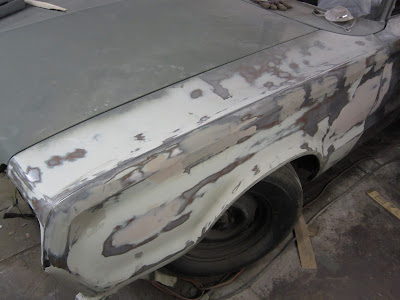We removed the passenger side fender to clean under it and to straighten out some dents. We recently dealt with some of the dents and it is looking good. Also we are getting very close to applying the self etching primer to the driver's side door and fender.
 |
| The passenger side fender. |
 |
| There was a large dent here that we were able to mostly get out with a hammer and dolly. |
 |
| The driver's side fender coming along well. |
 |
| This is my dad teaching my sister to sand filler. A skill she will need when we work on her '69 Dart. |































